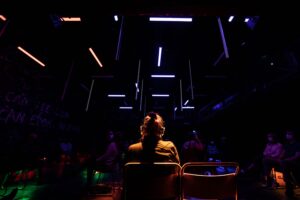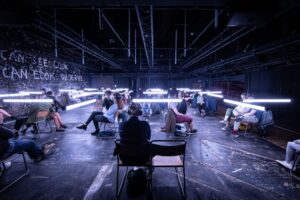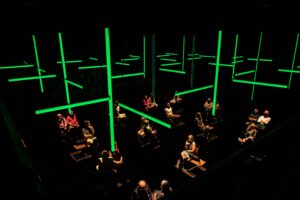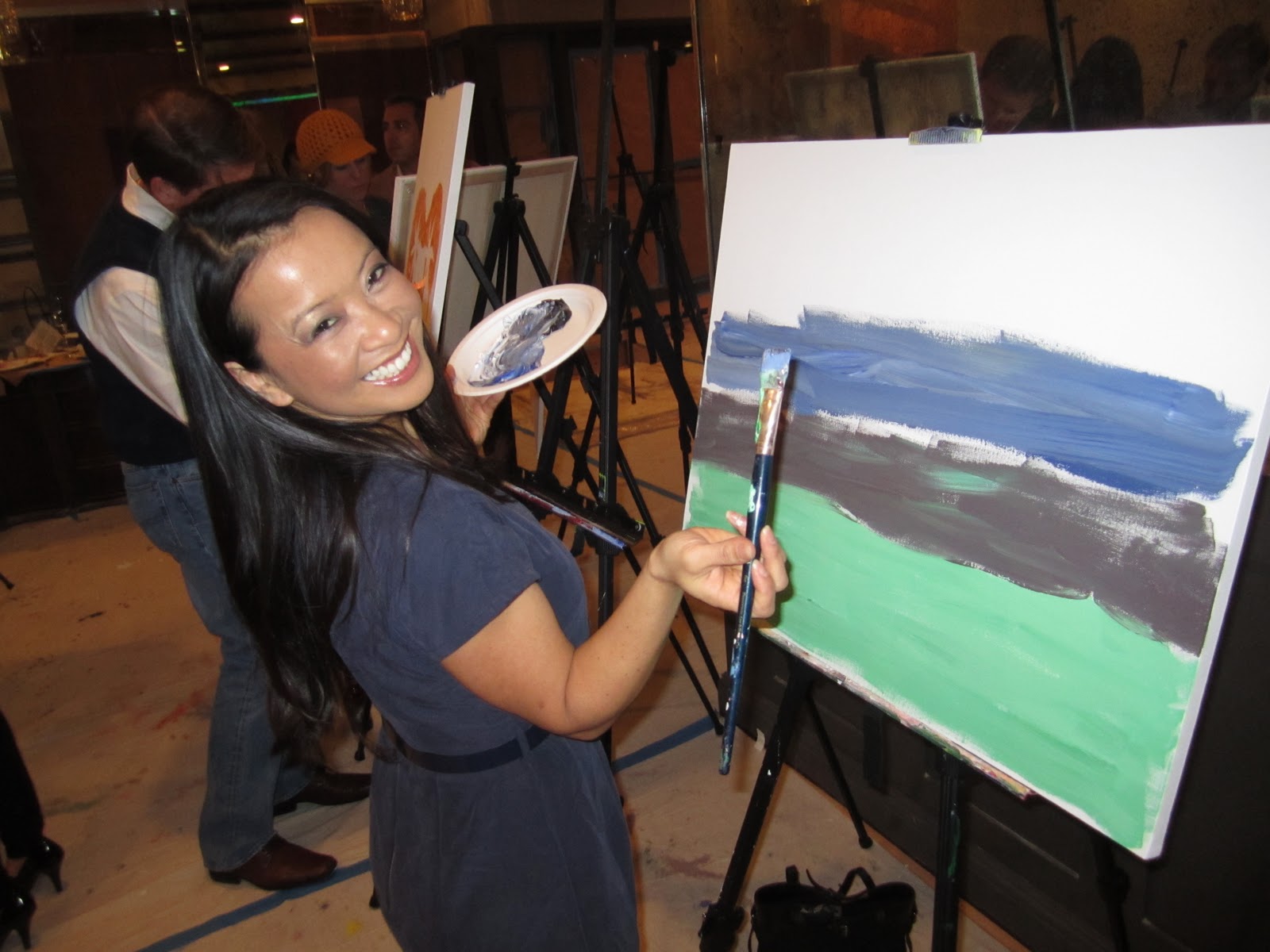
Theater lovers delight — while we can’t say the footlights are back on for this particular production, the stage doors are open again for “live” theater in Washington, DC.
It was a delight to return to The Shakespeare Theatre Company for the first time in over a year to not see Blindness in a compelling, unique production.
All should hasten to catch this immersive, actor-less, surround-sound experience. Blindness shines through the darkness as a testament to human adaptation and survival, both in its story and in the theater industry’s innovation to create it.
Based on Nobel Prize-winning author José Saramago’s phantasmagorical novel, adapted by Simon Stephens (The Curious Incident of the Dog in the Night-Time), Blindness begins with the all-too-familiar premise of a pandemic, only one that causes highly contagious sudden blindness. The afflicted are herded into quarantine, along with one character, the narrator, who inexplicably (and secretly) retains her sight
and bears witness as the world comes to a halt and falls apart.

At times violent, suspenseful, hopeful, and courageous, the script unfolds the toll of governmental paranoia and indifference to the plight of the suffering, and humans pushed to the limits to survive, yet seeks to uphold a message of hope in times of darkness.
While the plotline disappoints with some gaping holes and convenient bow-tying outcomes, it is the visual and audio that is the star of the show. Your headphones transport you into the terror of an epidemic, the resulting devolution of society and civility, and the results of base human survival instincts.
The sole “performer” in this sound and light installation is recorded audio on headphones from Olivier Award-winning actress Juliet Stevenson (Truly, Madly, Deeply), in a spookily omnipresent delivery that will have you constantly whipping around, certain she is standing at your elbow urgently whispering in your ear.
The audience is part of the set, grouped onstage in chair couplets underneath multicolored fluorescent lights hung from the ceiling in Jessica Hung Han Yan’s cleverly designed crisscrossing color-changing grid that lowers to envelop the audience. Yet nothing is as enveloping as the experience of pitch darkness, also a character in the story, making real the syrupy claustrophobic experience of total blindness.

Many of us wandered “blind” into the pandemic last year with no idea what was coming, and this literal experience of Blindness is a cathartic expression of our collective grief from the last twelve months, and the script’s overriding hopeful optimism provides worthy sustenance as along with the narrator, we emerge blinking from the darkness to a semblance of our former lives.
Limited to 40 guests at a time, the Walter Meierjohann directed production is a clever way to welcome theatergoers back into Sidney Harman Hall in a manner that is both safe and economically viable for the company. As Covid-mandated isolation diminishes and we reassess how we consume entertainment in light of new risks, this socially distanced, performer-less show is a safe and worthy bet to ease back in.
Blindness is playing at The Shakespeare Theatre Company’s Sydney Harman Hall (610 F Street, NW, Washington, DC 20004) through July 3, 2020. Running time: approximately 75 minutes with no intermission. Blindness includes extended periods of blackout with intermittent lighting, including
flashing lights and strobe in close proximity to patrons, and infrequent bright, white light.





